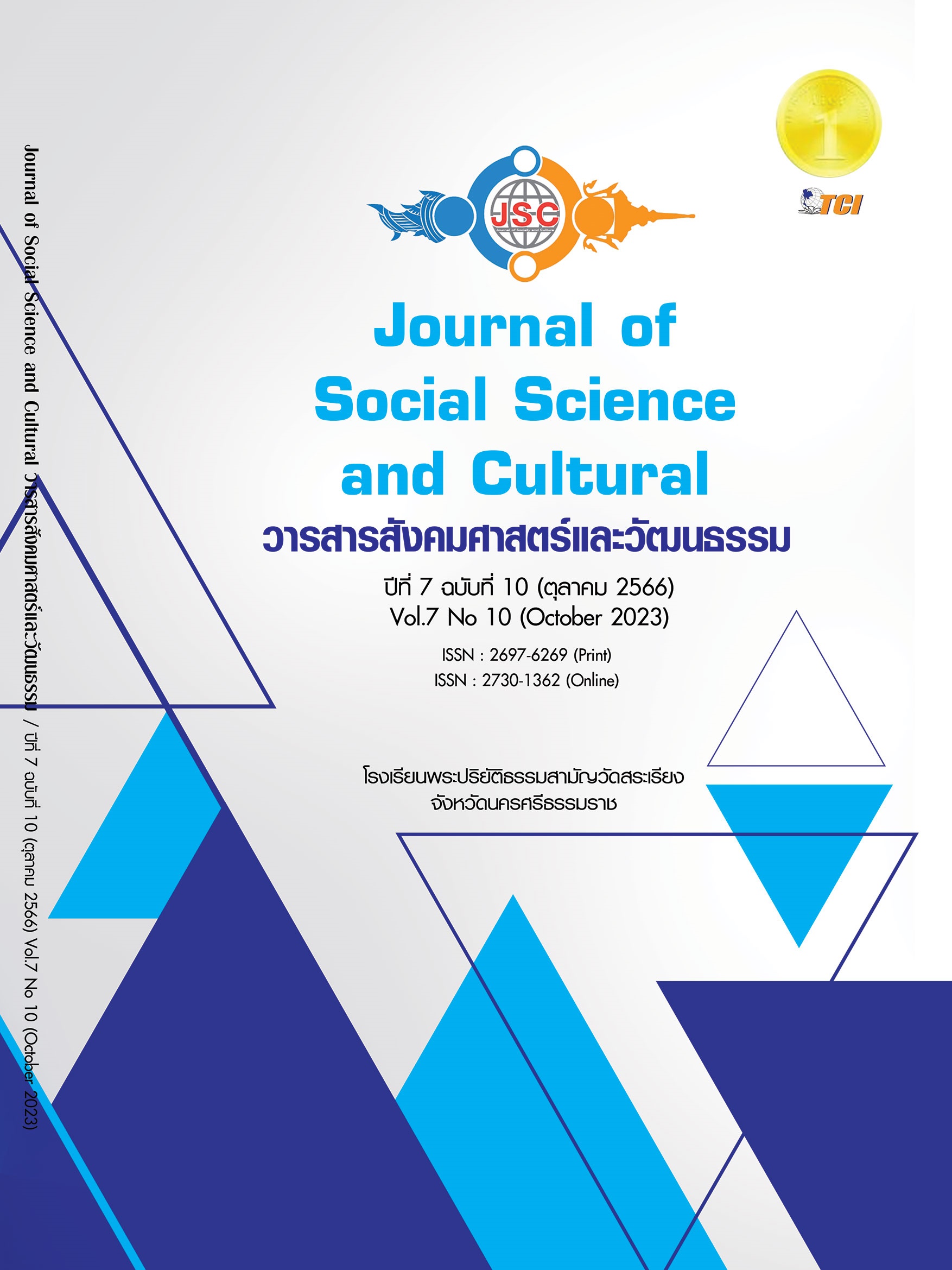SUPPLY CHAIN MANAGEMENT OF SHADOW PUPPETS IN NAKHON SI THAMMARAT PROVINCE
Main Article Content
Abstract
The research objectives were: 1) To analyze the original and new value chain of shadow puppet products in Nakhon Si Thammarat Province. 2) To assess the economic value of shadow puppet products before and after the project. The research results found that the analysis of the original value chain of shadow puppet products in Nakhon Si Thammarat Province, using the original baseline (activity base) to research the new value chain, found that finding new opportunities from the value chain that created growth of the grassroots economic value was done by managing a system of Eco-Systems (collaboration and sharing of different knowledge with different working lines). This resulted in two new value chains: 1) Reducing the role of links in the supply chain by producing products themselves (distributor 2) and adding links by taking new products from entrepreneurs (distributor 1) to sell in marketing channels. This can increase the income of entrepreneurs. 2) Expanding links is to add stakeholders in the value chain of entrepreneurs who are Nakhon Si Thammarat lacquerware entrepreneurs to create new products by transferring the cultural capital of shadow puppets in patterns on materials other than cowhide, namely the use of various copper sheets. The second objective found that the assessment of the economic value before and after the project of the original entrepreneurs found that the original entrepreneurs who produced shadow puppet products on the income of the shadow puppet entrepreneur No. 1 increased by 45.97%, the shadow puppet entrepreneur No. 2 was increased by 55.19%, the shadow puppet entrepreneur No. 3 was increased by 48.77%. In addition, the research project could also create cultural entrepreneurs in product value, which could generate income of 25,800 Bath, namely the lacquerware entrepreneur No. 4.
Article Details
References
กัลยา วานิชย์บัญชากัลยา วานิชย์บัญชา. (2561). การใช้ SPSS for Windows ในการวิเคราะห์ข้อมูล. ศูนย์หนังสือจุฬาลงกรณ์มหาวิทยาลัย: กรุงเทพมหานคร.
จรูญ หยูทอง. (2556). หนังตะลุง ตาหนาคนใต้ “โหมอ้ายเท่งอ้ายทอง”. สถาบันทักษิณคดีศึกษามหาวิทยาลัยทักษิณ: สงขลา.
ชนิกานต์ พนิมอุุปถัมภ์. (2565). นวัตกรรมผลิตภัณฑ์และกิจกรรมพื้นฐานของห่วงโซ่คุณค่าที่ส่งผลต่อผลการดำเนินงานวิสาหกิจชุมชนที่ประกอบกิจการผลิตภัณฑ์สมุนไพร ในประเทศไทย. วารสารนวัตกรรมสังคมและเทคโนโลยีสื่อสารมวลชน, 5(2), 64–77.
ชวน เพชรแก้ว. (2543). หนังตะลุงในประเทศไทย. สภานักศิลปะและวัฒนธรรมมหาวิทยาลัยราชภัฏสุราษฎร์ธานี: สุราษฎรธานี.
ชวน เพชรแก้ว. (2551). หนังตะลุงในประเทศไทย : พัฒนาการภูมิปัญญาบทบาทต่อสังคมและความคลี่คลายเปลี่ยนแปลง,” ในก่อนหวันตั้งดามเราจะทำอะไรดี. สถาบันทักษิณคดีศึกษา มหาวิทยาลัยทักษิณ: สงขลา.
นิพนธ์ พัวพงศกร. (2553). โครงการศึกษาแนวทางการจัดการห่วงโซ่อุปทาน และโลจิสติกส์ของสินค้าเกษตร. สถาบันวิจัยเพื่อการพัฒนาประเทศไทย: กรุงเทพมหานคร.
บุญชม ศรีสะอาด. (2543). การวิจัยเบื้องต้น (พิมพ์ครั้งที่ 3). กรุงเทพมหานคร: สุวีรินาสาส์น.
ประเสริฐ รักษ์วงศ์. (2548). แนวทางในการฟื้นฟู อนุรักษ์และสืบทอดหนังตะลุง : ฐานที่มั่นสุดท้ายทางวัฒนธรรมของภาคใต้. สถาบันทักษิณคดีศึกษา มหาวิทยาลัยทักษิณ: สงขลา.
พิทยา บุษรารัตน์. (2548). “ทะเลสาบสงขลา : ครรโภทรแห่งหนังตะลุงและโนรา,” ในหวันตั้งดาม. สารอาศรมวัฒนธรรมวลัยลักษณ์, 14(2), 28.
Cronbach, L. J. (1990). Essentials of psychological testing (5th ed.). New York: Harper Collins Publishers.


